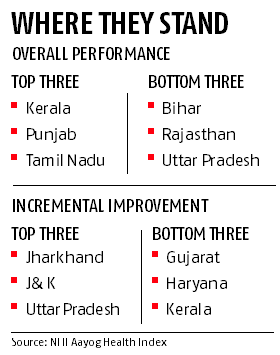900 319 0030
enquiry@shankarias.in
Why in news?
NITI Aayog recently released a comprehensive Health Index report titled “Healthy States, Progressive India”.
What is the report on?
What are the highlights?

What does it imply?
What does it call for?
Source: PIB, The Hindu